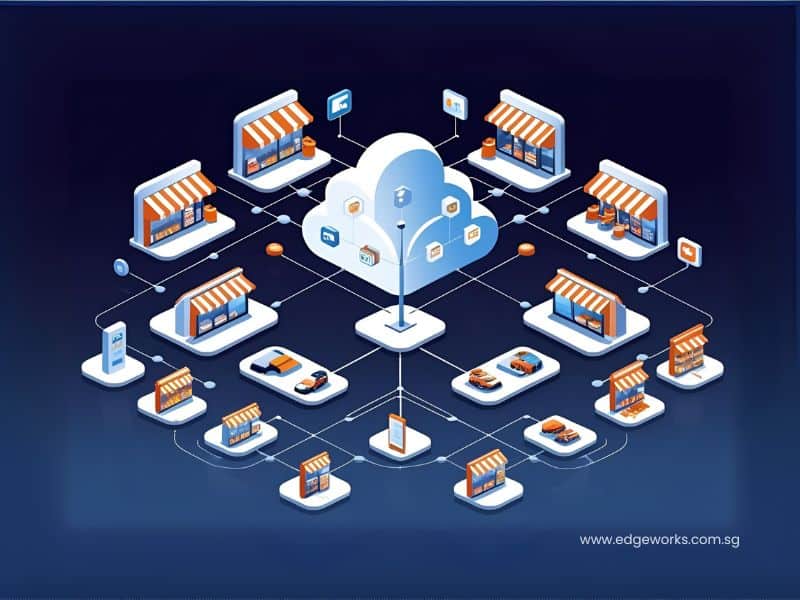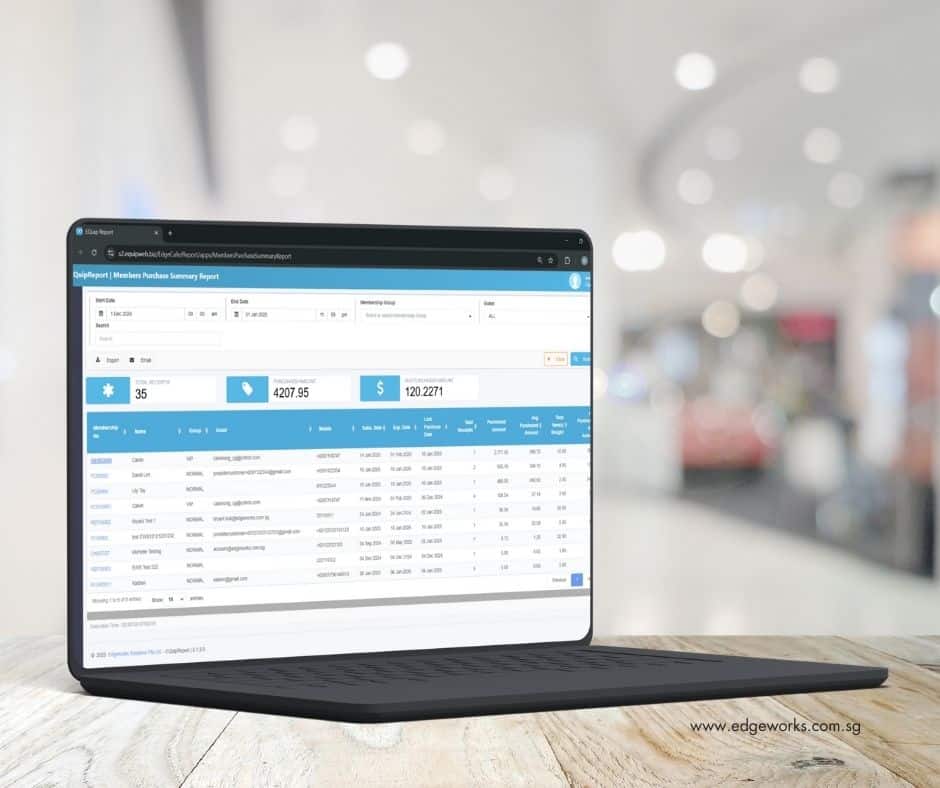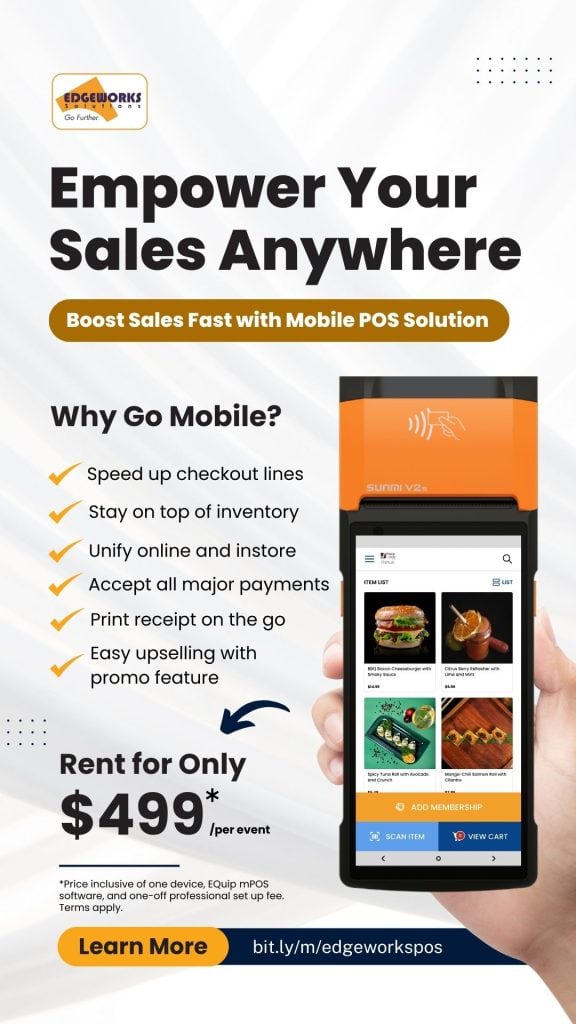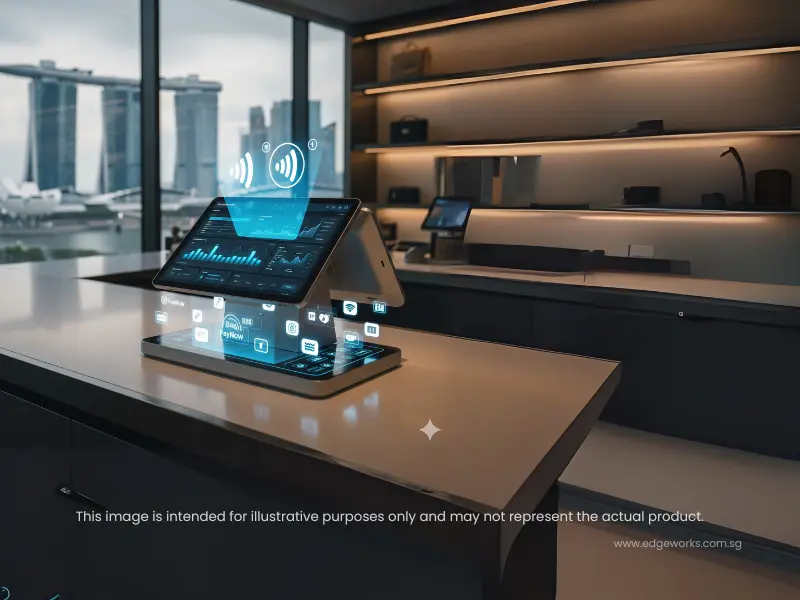For many multi-outlet retailers in Singapore, growth creates a painful side effect: fragmentation. Your store in the East feels disconnected from your store in the West. Inventory is a mystery, customer data is siloed, and getting a clear picture of your total business performance requires manually stitching together endless spreadsheets. This operational headache is a major barrier to scalable growth. The solution is to move beyond running separate stores and start building a truly cohesive retail brand with unified commerce. This approach is the key to connecting your operations seamlessly, and a powerful, integrated POS system is what makes it possible.
This isn’t just about technology; it’s about strategy. A unified commerce platform brings all your critical business functions—sales, inventory, customers, and reporting—into a single, central hub. This eliminates guesswork, improves efficiency, and creates a consistent brand experience for your customers, no matter which of your locations they visit. From our experience helping Singaporean businesses scale from one outlet to twenty, this shift from fragmented operations to a unified model is the most critical step toward sustainable success. This guide provides a practical, 5-step playbook to get you there.

What is Unified Commerce for a Multi-Outlet Retailer?
Let’s clarify what this means in a practical, real-world context for a business like yours.
The Old, Fragmented Way: Each of your stores operates like an independent island. The POS system in one store doesn’t talk to the system in another. To check stock, a staff member has to physically call the other outlet. A loyal customer from one branch isn’t recognized in another. You, as the owner, have to pull separate reports from each location to understand your overall business health.
The New, Unified Way: All your stores are connected to a single, central brain. Your POS system acts as the command center for the entire operation. This is the core principle of unified commerce.
This synergy has a proven impact on the bottom line. As research from Harvard Business Review has shown, creating consistent, integrated customer experiences leads to higher spending and increased loyalty. For a multi-outlet business, consistency is impossible without a unified backend.
The 5-Step Unified Commerce Playbook for Retailers
Transitioning to a unified model requires a structured approach. Follow these five steps to build a seamless and profitable commerce ecosystem.
Step 1: Centralize Your Inventory Management
This is the bedrock of unified retail. Inaccurate inventory is a primary cause of lost sales and customer frustration. Your first goal must be to achieve a single, real-time view of all stock across all locations.
What Your Unified POS Should Do:
Provide Real-Time, Cross-Outlet Visibility: Your staff at any location should be able to look up an item and see the exact stock count at every other store.
Automate Low-Stock Alerts: The system should proactively notify you when a popular item is running low at a specific branch, preventing stockouts.
Simplify Inter-Outlet Transfers: When one store is low on an item that another has in surplus, the system should make it simple to record a stock transfer, keeping your central inventory records perfectly accurate.
Pro-Tip: Conduct a full, chain-wide stocktake using your new system’s digital stocktake and barcode scanning features. This creates a clean, accurate baseline from which your unified inventory system can operate.
Step 2: Unify Your Customer Database & Loyalty Program
A customer’s loyalty should be to your brand, not just to a single branch. A fragmented customer database prevents this and makes your marketing efforts inefficient.
What a Unified CRM Achieves:
One Customer, One Profile: A customer’s details and full purchase history are captured in a single profile that is accessible across all your stores.
Recognize & Reward Everywhere: A VIP customer from your Orchard Road branch should be instantly recognized and receive the same perks and recognition when they visit your Jurong branch.
Targeted Promotions: With a central database, you can run promotions and issue discounts that are valid and redeemable at any of your outlets, creating a truly consistent brand experience.
Step 3: Consolidate Your Sales & Performance Reporting
Are you spending hours every week manually combining sales reports from different outlets into one master spreadsheet? A unified system eliminates this completely.
The Power of Centralized Reporting:
Get a 360-Degree View Instantly: From your headquarters or even your mobile phone, you should be able to see a consolidated, real-time report of total sales across the entire chain.
Compare Outlet Performance: Easily compare sales, top-selling products, and peak hours between different locations to identify high-performing branches and share best practices.
Make Data-Driven Decisions: With accurate, consolidated data, you can confidently decide where to allocate resources, which promotions are working best chain-wide, and which outlets may need more support.

Step 4: Standardize Your Promotions & Pricing
Inconsistency is a brand killer. A customer should never discover that a product is priced differently at two of your locations, or that a promotion advertised by the brand is not honored at a specific store.
How Unified Commerce Enforces Consistency:
Centralized Price Book: Manage product prices from a central point. Any price updates are instantly pushed out to all POS terminals across all outlets.
Chain-Wide Discount Management: Create and manage promotions (e.g., “20% off all dresses,” “Buy-One-Get-One-Free”) from your head office. The system ensures the discount rules are applied uniformly at every checkout, eliminating cashier errors.
Step 5: Empower Your Staff with a User-Friendly System
Even the most powerful system will fail if your staff finds it difficult to use. A crucial part of unifying your operations is ensuring that your team on the ground can leverage the system’s capabilities easily.
Key Features for Staff Empowerment:
Intuitive Interface: The POS should be easy to learn and use, reducing training time for new hires.
Quick Access to Information: Staff should be able to quickly look up stock at other locations or access a customer’s profile without fumbling through complex menus.
Secure Role-Based Access: You can give cashiers, store managers, and head-office staff different levels of access and permissions, ensuring data security while providing everyone with the tools they need to do their job effectively.
Unify Your Retail Business, Starting Today
Moving to a unified commerce model is the most impactful step you can take to build a scalable and resilient retail business. It streamlines your operations, empowers your staff, delights your customers, and gives you the clear, comprehensive data you need to drive your business forward.
The right technology partner is the key to this transformation. At Edgeworks, our EQuipPOS system is designed specifically to provide Singaporean retailers like you with a single, powerful platform to manage your entire multi-outlet operation.
➡️ Explore our Integrated Retail POS System
➡️ Talk to an expert today to see how a unified system can solve your operational challenges.




